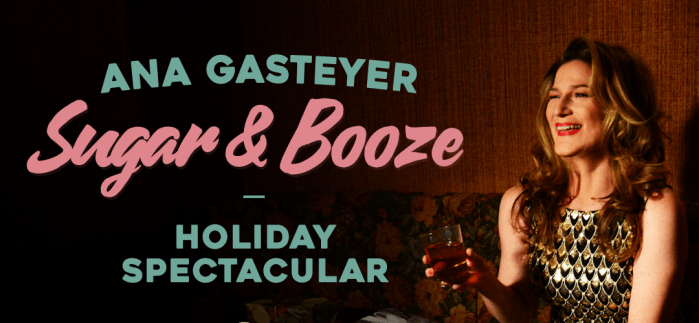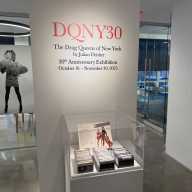Paisley Currah takes his academic expertise to a new level
“I love teaching the students,” the 39-year-old Currah said. “I’m teaching a course on traditional political theory, start with Machiavelli, going through the canon. My class ended on Thursday with my students screaming at each other about inequality and justice.”
That love of teaching makes his move to the Center for Lesbian and Gay Studies, where he is beginning his first academic year as executive director, all the more remarkable.
“I had been on the [CLAGS] board for a number of years, like five years, and I had gotten to know the organization and its work,” he said. “I thought its work was really crucial.”
Currah will teach only one course per year as long as he heads the center and he will have less time for his own writing. At the center, which is housed at the City University’s Graduate Center on Fifth Avenue, Currah will be exposed to some of the latest thinking on the queer community.
“There is a trade off in the sense that I am doing less teaching and there is much less time for my own research,” Currah said. “You really get to see what’s out there in the field and support new and cutting edge research.”
Martin Duberman, the author and historian, founded the center in 1991. It has two major roles in the queer community.
“One is as a research institution supporting academic work to foster research on the [lesbian, gay, bisexual, and transgender] population and sexual minorities,” Currah said. “In terms of the larger LGBT community, the role is to be asking the questions that aren’t being asked and to think about the groups that aren’t being considered, the kind of things that the major gay rights groups don’t want to think about.”
The center began an ongoing calendar of forums, entitled the “Bad Law Series,” on September 16 with a discussion of Lawrence v. Texas, the U.S. Supreme Court decision that struck down the nation’s remaining sodomy laws.
These discussions about the law are meant to “interrogate these legal categories and not just see them as emancipatory,” Currah said. “Carving out rights for lesbian, gay, bisexual people and to some very limited extent transgender people, is obviously a good thing, but we should pay attention to the way it turns us into good little citizens in a larger capitalist system,” he said.
The center is presenting a series this fall on the “intersection of disability studies and queer studies” that will explore the similarities between these two topics.
“People have impairments, they have things about their bodies that make them different from other people and the disability comes in the way society is structured that make that kind of body unable to navigate,” Currah said. “For me that really resonates with transgender rights. The way we structure society so much around gender makes it difficult for transgender people to navigate.”
The center will also continue a colloquium series where researchers can present new work and it is supporting the International Research Network that brings together academics, attorneys, activists, and others from around the globe to discuss shared interests.
Currah runs CLAGS with the help of one development director and part-time input from graduate students. The center’s budget last year was $180,000. It also has between 300 and 400 public members.
“We do get a lot of support from regular members of the gay community who seem to understand its importance,” Currah said.
The center, with its pushing-the-envelope sensibility, is a natural fit for Currah. He was born and raised in southern Ontario in a village of 200 people. In 1988, he began work on his Ph.D. in political science at Cornell, which he completed in 1994, when he started teaching at Brooklyn College.
Currah was among those activists who argued, unsuccessfully, for including transgendered people in the Sexual Orientation Non-Discrimination Act, a New York State law that bans discrimination based on sexual orientation enacted last December. Currah helped draft language for the Gender Expression Non-Discrimination Act, a state bill that bans discrimination based on gender identity or expression. That bill, which would protect transgender people among others, was introduced in the state legislature earlier this year.
His interest in transgender issues came in the 80s and 90s while studying divorce cases in which queer parents were fighting for custody of their children. Gay and lesbian advocates would sometimes argue that “kids who are raised by same-sex households have totally normal gender identity and expression,” according to Currah.
“I found that interesting and also troubling because it suggested there was something wrong with kids whose gender identity is not associated with their birth sex or whose gender expression is non-conforming,” he said. “It’s one of these moments when there is a bit of a break between GLB rights advocacy and transgender rights advocacy. That’s when I really started researching it.”
CLAGS is operating at a time when the dominant voices in the queer community are those that argue for same-sex marriage. An average American homosexual would probably associate “Queer Eye for the Straight Guy” with the gay community before they would think of Michel Foucault, the late French social theorist, if they think of queer theory at all. CLAGS seems more in touch with the gay liberationist philosophy of the 70s than the gay assimilationist ethos of 2003.
The center is ahead of the curve, Currah said, and he points to the acceptance of transgender inclusion by many gay and lesbian groups as evidence that supposedly radical ideas can quickly become the conventional wisdom.
“An idea that is a little bit too far out there, pushing the envelope now, in 10 or 15 years will be seen as something that everybody always agreed with,” he said.
The center wants to include more of the G, the L, the B, and the T and any other letter activists care to add.
“CLAGS just doesn’t think about ideas,” Currah said. “We think about what the best ideas are. As an organization we are trying to support research that makes more spaces in the world for people rather than less.”





































